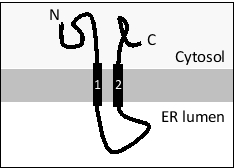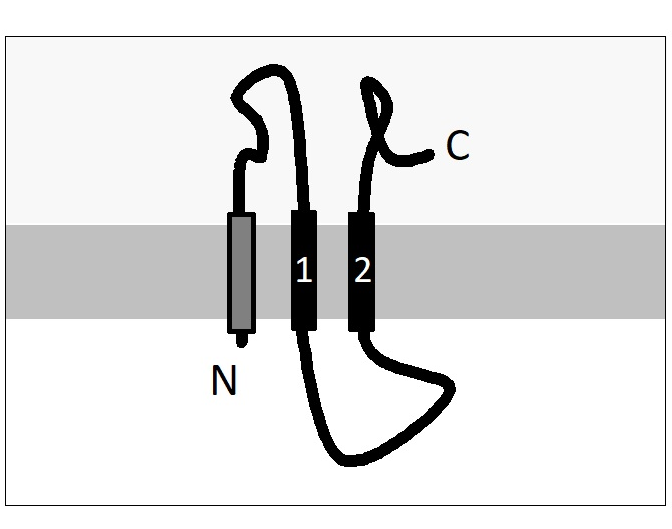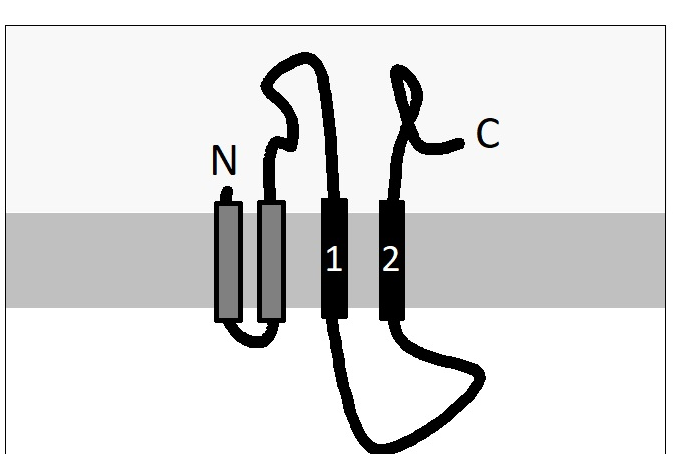Question 32
(Multiple Choice)
Consider a transmembrane protein with the following topology that has an internal signal sequence (helix 1). If you fuse a canonical ER signal sequence at the N-terminus of this protein, how would you expect the topology to change? The ER lumen is at the bottom in all drawings. For simplicity, assume that the effect of charged residues flanking the transmembrane helices is negligible in this case. 
A)

B)

C)

D)

E)

Answer